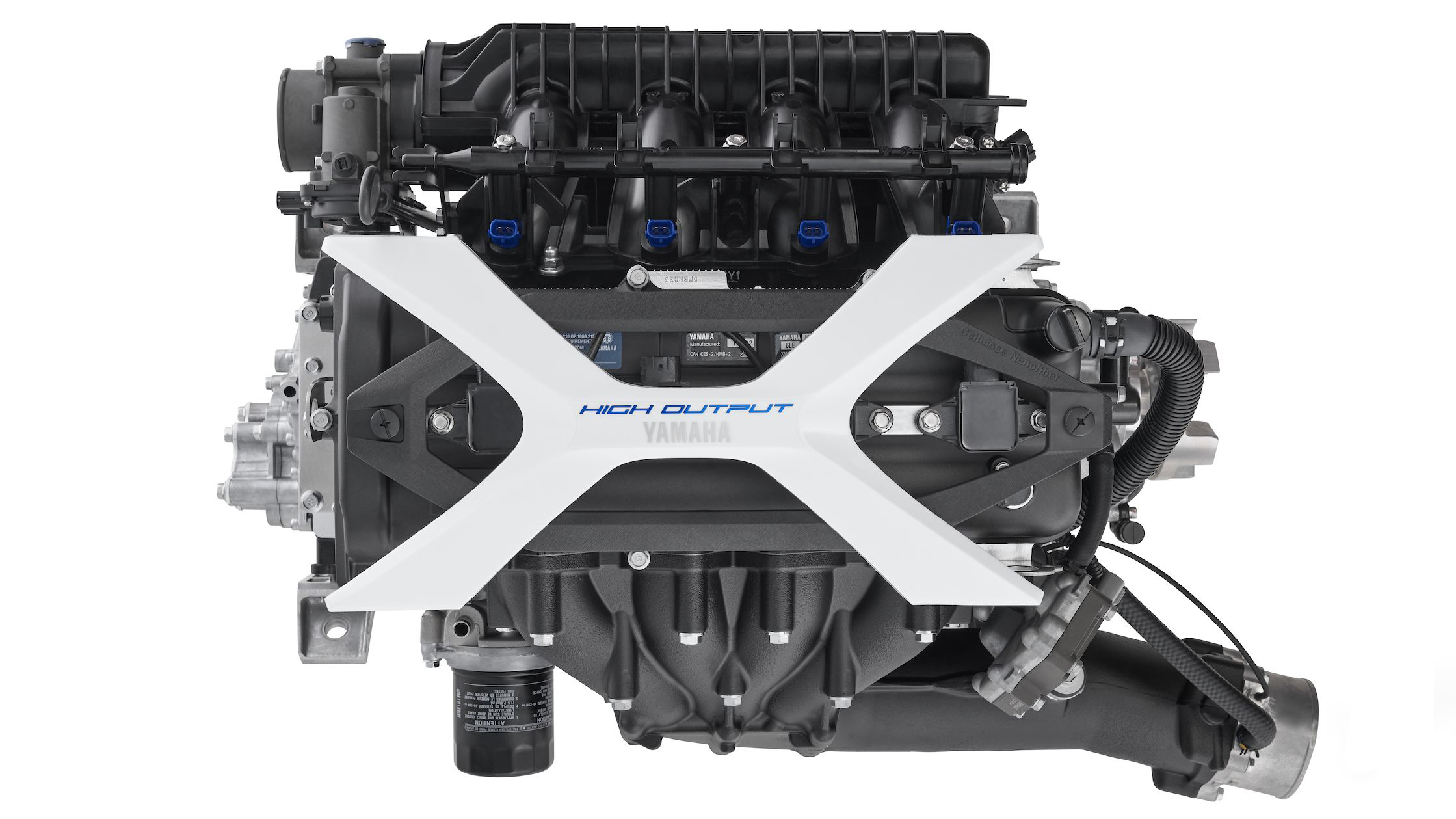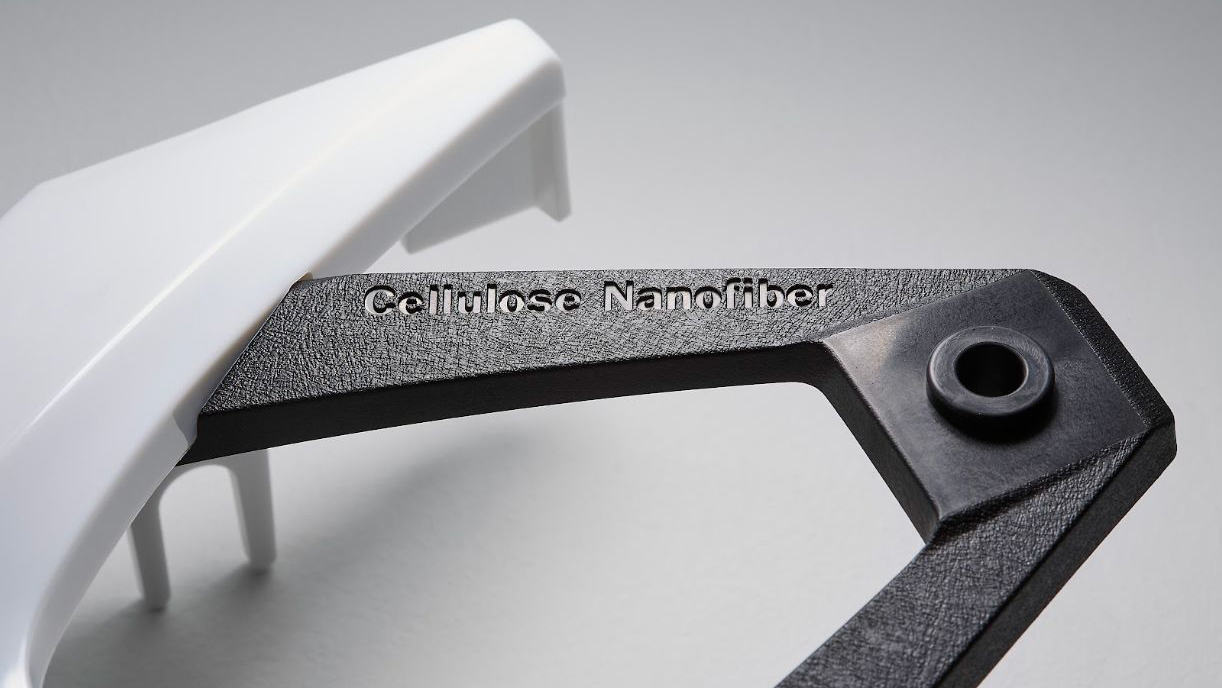The Yamaha WaveRunner division has lifted the lid on a new-generation, non-supercharged four-cylinder marine engine that will take its personal watercraft range into the the next decade.
Unveiled in the US overnight, the new 1.9-litre (1898cc) four-cylinder Yamaha engine replaces the 1.8-litre (1802cc) four-cylinder Yamaha marine engine introduced on the Yamaha FX WaveRunner series 15 years ago – in 2008.
The new 1.9-litre four-cylinder engine has a claimed 200 horsepower and resets Yamaha’s benchmark for having the largest capacity motor in the Jet Ski and personal watercraft market globally.


Yamaha’s superseded non-supercharged 1.8-litre four-cylinder engine (with an estimated 180 horsepower) was already the largest capacity motor in the Jet Ski segment.
Now the company has raised the bar again, to stay ahead of the competition.
The new Yamaha 1.9-litre four-cylinder engine compares to the 1630cc three-cylinder engine by Sea-Doo (in supercharged and non-supercharged configurations) and the 1.5-litre four-cylinder engine in the Kawasaki Jet Ski range (also in supercharged or non-supercharged configurations).

Yamaha’s new 1.9-litre (1898cc) four-cylinder engine will be fitted to the 2024 Yamaha WaveRunner FX HO and FX HO Cruiser, as well as the successor to the Yamaha GP1800R – renamed as the 2024 Yamaha GP19 HO – and the 2024 Yamaha VX HO Cruiser.
Yamaha’s supercharged 1.8-litre four-cylinder engine – also introduced in 2008, though updated several times since then – fitted to the Yamaha FX SVHO and Yamaha GP SVHO series of high-performance WaveRunners, carries over from 2023 into 2024 unchanged.
More details on the complete 2024 Yamaha WaveRunner line-up – including pricing – can be found here.
Due to the rollout of Yamaha’s engineering programs and development resources, the supercharged version of the new 1.9-litre engine is not expected until the 2025 model year at the earliest.

There is speculation the supercharged 1.9-litre could coincide with the arrival of the new-generation Yamaha GP SVHO – and also be fitted to the Yamaha FX SVHO at the same time – however Yamaha is yet to outline any information or timing.
Meantime, the highly-regarded 1.0-litre (1049cc) three-cylinder engine fitted to popular Yamaha WaveRunner models such as the EX, Jet Blaster and VX series remains unchanged from 2023 to 2024.
According to Yamaha WaveRunner representatives, the new non-supercharged 1.9-litre four-cylinder marine engine promises more power, faster acceleration and a higher top speed.

For now it is unclear how the new engine compares to its predecessor when it comes to fuel consumption, however each Yamaha WaveRunner variant with the 1.9-litre four-cylinder is still equipped with the same 70-litre fuel tank (or 18.5 US gallons) as the previous 1.8-litre models.
In summary, Yamaha WaveRunner says the new 1.9-litre four-cylinder engine has “optimised intake and exhaust paths, and a 10 per cent larger throttle body for more power and torque”.
The new engine is paired with a new “top-loader” intake grate on 2024 Yamaha FX HO and Yamaha VX HO models for “improved jet pump efficiency and acceleration”.
Other changes on 1.9-litre-equipped 2024 Yamaha WaveRunner models include:
- 2024 Yamaha FX HO models have a revised 7-inch touchscreen (now the same as FX SVHO), instead of a 5-inch touchscreen previously;
- 2024 Yamaha FX HO models have new ‘Drive Control’ options including Economy, Towing, Performance, Comfort and Custom settings;
- 2024 Yamaha GP19 HO gains auto trim and launch control technology borrowed from the Yamaha GP1800R SVHO.

Other information Watercraft Zone has been able to learn about the new non-supercharged Yamaha 1.9-litre four-cylinder engine – thanks to the guys at GreenHulk.net – is as follows:
- New ‘X’ shape engine cover made from plant-based fibre material;
- New block and cylinder head (larger bore);
- New combustion chambers;
- New intake manifold and exhaust manifold (better flowing, and more compact to make routine maintenance easier);
- Redesigned intake and exhaust ports (intake ports are now oval, and exhaust ports were shrunk 2mm to improve exhaust scavenging and reduce emissions);
- 2mm larger pistons (to 88mm), but same crankshaft and connecting rods as before;
- New lead-free bearings for the connecting rods and main crank journals;
- Higher compression ratio than before (11.0:1 on the 1.8-litre to 11.2:1 on the 1.9-litre)
- Redesigned valve cover and camshaft caps;
- There are now four camshaft caps (versus six previously) and the caps are a slimmer design
- The camshafts in the new 1.9-litre have the same lift and duration as before on the 1.8-litre, but they now have less lobe separation angle, which equates to more overlap, delivering more mid-range torque and smoother operation;
- 10 per cent larger throttle body (65mm up from 60mm);
- Larger flame arrestor (from 68mm to 88mm);
- Smoother rev-limiter thanks to a “high detection resolution for revolution on the rotor”.
Among the components that carryover from the 1.8-litre to the 1.9-litre:
- Connecting rods, crankshaft, oil pump, oil pan, and the PTO cover (Power Take Off is on the rear of the engine where the crankshaft transmits power to the driveshaft).
Yamaha representatives told Watercraft Zone the first shipments of the new 2024 Yamaha WaveRunners are due in Australian showrooms before the end of this year, pending any unforeseen delays.
Click here for the price and specifications for the 2024 Yamaha WaveRunner line-up in Australia.
MORE: All our Yamaha WaveRunner coverage in one click
MORE: All our Sea-Doo coverage in one click
MORE: All our Kawasaki Jet Ski coverage in one click
MORE: All our news coverage in one click
MORE: Follow us on Facebook
MORE: Follow us on YouTube


